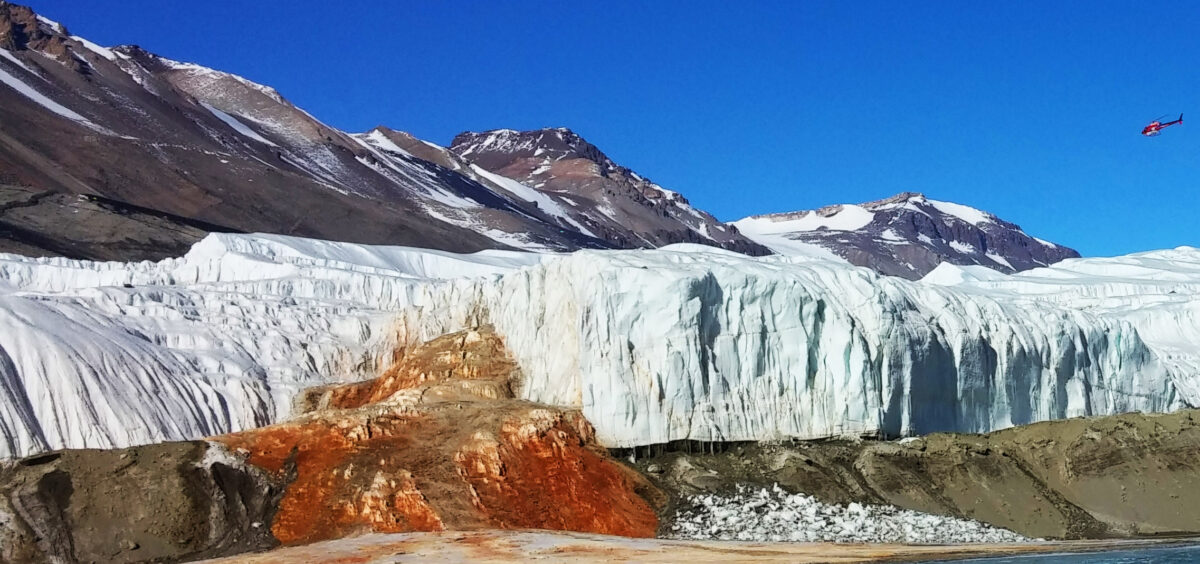Imagine trekking through Antarctica and stumbling across bright red water that cuts through the miles of otherwise uninterrupted white ice. It may feel like you’ve stepped into a horror movie, but don’t worry — it’s just Blood Falls. West of Antarctica’s Ross Archipelago and McMurdo Station, Blood Falls has attracted curious explorers since 1911. Theories about the cause for this water outflow’s incredible color have varied over the years, but in 2017, one study helped put the mystery to rest. Now you can learn the secret behind Blood Falls, too. Spoiler alert: this natural wonder is not as spooky as it seems.

In 1911, geologist Griffith Taylor explored Blood Falls and theorized that red algae lent the area its red color. By the mid-1960s, scientists began discussing the idea that the color was actually caused by iron salts from within the ice sheet. A 2017 study published by Cambridge University Press reinforced this idea through radar scans of the location. Scientists from several universities worked together to identify the subglacial lake of iron-rich saltwater that feeds Blood Falls.
“We knew that there was a brine outflow creating the falls,” lead author Jessica Badgeley, an undergraduate at Colorado College during the 2017 study, told PopSci. “The mystery that remained was the link between that source and the outflow. This is an unusual feature, and there are very few things like it. So it wasn’t obvious how you got the brine from below the glacier up to the surface.”

Further curiosities remain in this briny, iron-filled water. Research on the microbial ecosystem of Blood Falls found 17 different types of microorganisms. These life forms exist without oxygen, instead using sulfate for respiration. Even stranger? The microbes also live without light, deep within the subglacial lake that fuels Blood Falls. Check out the full study here.
